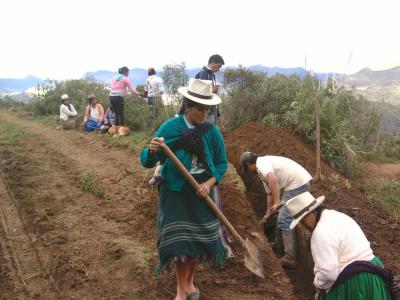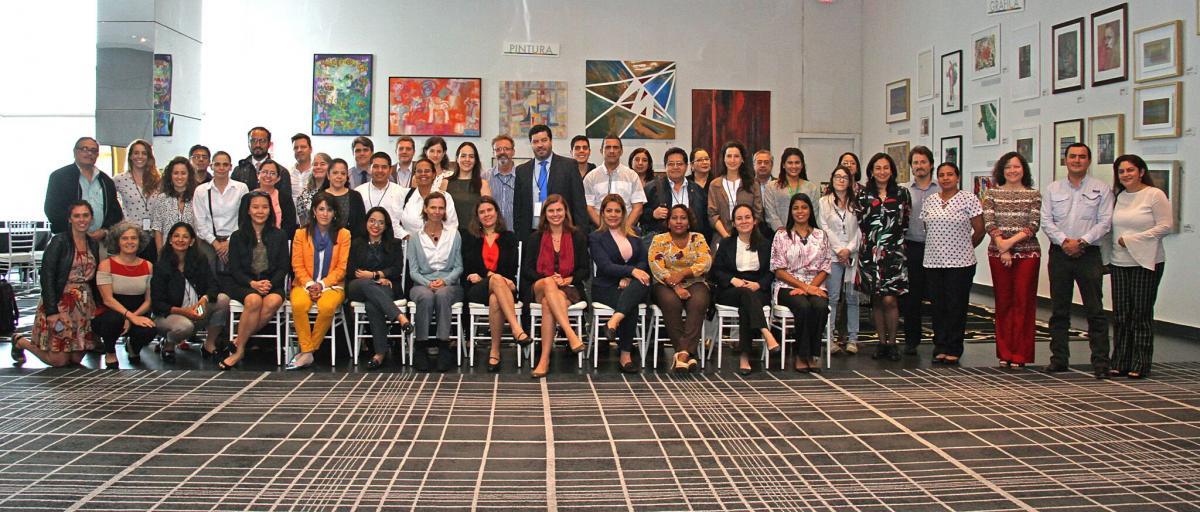Connecting adaptation planning with resilience and the Sustainable Development Goals in Latin America
Submitted by esther.lake@undp.org on 26 October 2018

By Jeffrey Lamb, Climate Change Adaptation Advisor, UNDP NAPs team
The economic impacts of climate change on developing countries continues to grow each year. Much of these economic losses could be mitigated by incorporating climate risks and resilience into planning.
I recently had the privilege of participating as a technical resource person on behalf on UNDP at the Regional NAP-Expo from 22-23 October 2018. This Regional NAP Expo was also held back-to-back with the joint UNDP-UN Environment National Adaptation Plan Global Support Programme (NAP-GSP) Regional Training Workshop for Latin America, held from 24-26 October 2018, in Panama City, Panama - where these issues were discussed, along with many other challenges and opportunities arising from adaptation planning initiatives.
 This was the first time that a NAP-Expo was held in Latin America. It was also my first time attending a NAP-Expo.
This was the first time that a NAP-Expo was held in Latin America. It was also my first time attending a NAP-Expo.The main focus of these two events that spanned five days was to promote and illustrate innovative approaches in adaptation planning. These events brought together 120 people representing nearly every country in Latin America as well as many development partners.
It was evident by the large turnout, presentations and exchanges that government policy-makers and planners from the region have prioritised reducing the impacts of climate change on people, places and resources. They demonstrated their commitment to conducting comprehensive climate change adaptation planning.
A key objective of the week was to strengthen the capacities of governments through the exchange of knowledge and experiences. In my conversations participants articulated that they believed that this objective was being met as they found great value in hearing from others about their experiences in developing adaptation processes and plans. However, adaptation planners noted that the complexities and iterative nature of effective adaptation planning require ongoing sharing of information and capacity building.
In my presentation, I provided an overview of the key starting points for developing adaptation processes based on UNDPs support to over 40 countries on NAPS to date. Firstly, governments should decide on the scope – be it national, regional, sectoral or other. Secondly, they must design a plan or a process so that it addresses the country's specific climate vulnerabilities and impacts. While governments drive the process, communities and local authorities are a key stakeholder in the process. Lastly, they need to include the private sector in adaptation planning and create and promote strategies that drive investments in climate-resilient companies.
When NAPs are well designed and implemented they will complement other current and completed adaptation planning projects and activities including GCF-supported projects as well as Nationally Determined Contributions (NDCs), creating larger impact and paradigm shifts in government planning.
An excellent example of this dynamic is the GCF-financed project supporting the Government of Uruguay to advance its National Adaptation Planning process in cities and local governments. The NAP-Cities project aims to build adaptive capacity and resilience in cities, infrastructures and urban environments, and facilitate the integration of climate change adaptation into relevant new and existing policies, programmes and activities. In achieving these objectives Uruguay will also progress in achieving its NDC goals.
Through the exchange of perspectives, approaches and experiences in developing and implementing adaptation planning processes, I learned a lot from my fellow participants. What I found particularly interesting was seeing how governments are striving to make linkages between their adaptation plans and processes and the Sustainable Development Goals.
> Photos